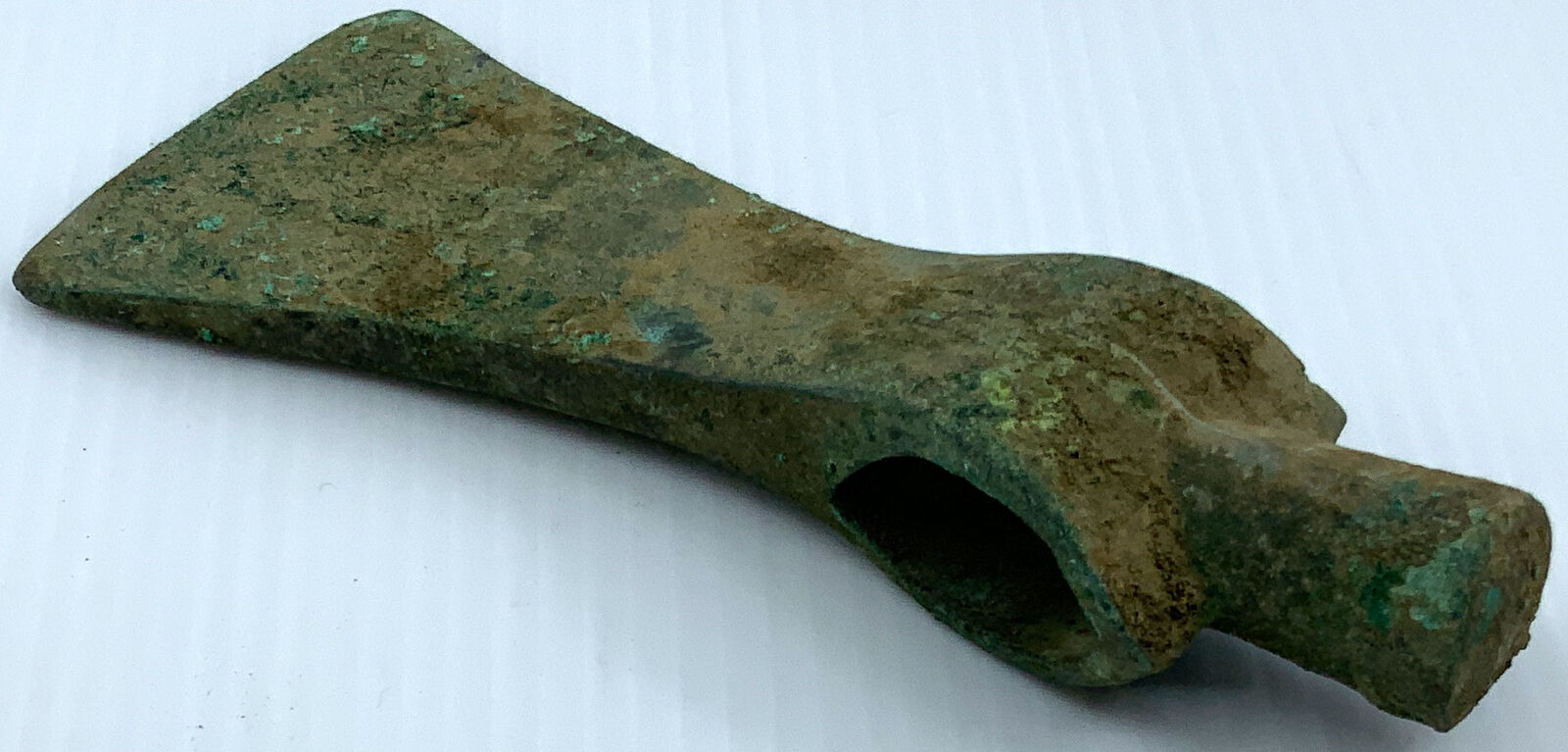|
Hitite Artifact – Bracelet
Circa 2000 B.C.
| Weight: 78.92 grams | 72mm | Material: Bronze |
This is a very rare bracelet.
Provenance: From private collection in the United States of America.
Ownership History: From private collection in the United States, bought in private sale in the United States of America.
You are bidding on the exact item pictured, provided with a Certificate of Authenticity and Lifetime Guarantee of Authenticity.
 The Hittites (/ˈhɪtaɪts/) were an Anatolian people who played an important role in establishing first a kingdom in Kussara before 1750 BC, then the Kanesh or Nesha kingdom (c. 1750–1650 BC), and next an empire centered on Hattusa in north-central Anatolia around 1650 BC. This empire reached its height during the mid-14th century BC under Šuppiluliuma I, when it encompassed an area that included most of Anatolia as well as parts of the northern Levant and Upper Mesopotamia. The Hittites (/ˈhɪtaɪts/) were an Anatolian people who played an important role in establishing first a kingdom in Kussara before 1750 BC, then the Kanesh or Nesha kingdom (c. 1750–1650 BC), and next an empire centered on Hattusa in north-central Anatolia around 1650 BC. This empire reached its height during the mid-14th century BC under Šuppiluliuma I, when it encompassed an area that included most of Anatolia as well as parts of the northern Levant and Upper Mesopotamia.
Between the 15th and 13th centuries BC, the Empire of Hattusa, conventionally called the Hittite Empire, came into conflict with the New Kingdom of Egypt, the Middle Assyrian Empire and the empire of Mitanni for control of the Near East. The Middle Assyrian Empire eventually emerged as the dominant power and annexed much of the Hittite Empire, while the remainder was sacked by Phrygian newcomers to the region. After c. 1180 BC, during the Late Bronze Age collapse, the Hittites splintered into several independent Syro-Hittite states, some of which survived until the eighth century BC before succumbing to the Neo-Assyrian Empire.
The Hittite language was a distinct member of the Anatolian branch of the Indo-European language family, and along with the closely related Luwian language, is the oldest historically attested Indo-European language, referred to by its speakers as nešili “in the language of Nesa”. The Hittites called their country the Kingdom of Hattusa (Hatti in Akkadian), a name received from the Hattians, an earlier people who had inhabited and ruled the region until the beginning of the second millennium BC and spoke an unrelated language known as Hattic. The conventional name “Hittites” is due to their initial identification with the Biblical Hittites in 19th century archaeology.
The history of the Hittite civilization is known mostly from cuneiform texts found in the area of their kingdom, and from diplomatic and commercial correspondence found in various archives in Assyria, Babylonia, Egypt and the Middle East, the decipherment of which was also a key event in the history of Indo-European studies.
The development of iron smelting was once attributed to the Hittites of Anatolia during the Late Bronze Age, with their success largely based on the advantages of a monopoly on ironworking at the time. But the view of such a “Hittite monopoly” has come under scrutiny and is no longer a scholarly consensus. As part of the Late Bronze Age/Early Iron Age, the Late Bronze Age collapse saw the slow, comparatively continuous spread of ironworking technology in the region. While there are some iron objects from Bronze Age Anatolia, the number is comparable to iron objects found in Egypt and other places during the period; and only a small number of these objects are weapons. Hittites did not use smelted iron, but rather meteorites. The Hittite military made successful use of chariots.
In classical times, ethnic Hittite dynasties survived in small kingdoms scattered around what is now Syria, Lebanon and the Levant. Lacking a unifying continuity, their descendants scattered and ultimately merged into the modern populations of the Levant, Turkey and Mesopotamia.
During the 1920s, interest in the Hittites increased with the founding of Turkey and attracted the attention of Turkish archaeologists such as Halet Çambel and Tahsin Özgüç. During this period, the new field of Hittitology also influenced the naming of Turkish institutions, such as the state-owned Etibank (“Hittite bank”), and the foundation of the Museum of Anatolian Civilizations in Ankara, which is 200 kilometers (124 miles) west of the Hittite capital of Hattusa and houses the most comprehensive exhibition of Hittite art and artifacts in the world.
|





 The Hittites (/ˈhɪtaɪts/) were an Anatolian people who played an important role in establishing first a kingdom in Kussara before 1750 BC, then the Kanesh or Nesha kingdom (c. 1750–1650 BC), and next an empire centered on Hattusa in north-central Anatolia around 1650 BC. This empire reached its height during the mid-14th century BC under Šuppiluliuma I, when it encompassed an area that included most of Anatolia as well as parts of the northern Levant and Upper Mesopotamia.
The Hittites (/ˈhɪtaɪts/) were an Anatolian people who played an important role in establishing first a kingdom in Kussara before 1750 BC, then the Kanesh or Nesha kingdom (c. 1750–1650 BC), and next an empire centered on Hattusa in north-central Anatolia around 1650 BC. This empire reached its height during the mid-14th century BC under Šuppiluliuma I, when it encompassed an area that included most of Anatolia as well as parts of the northern Levant and Upper Mesopotamia.




